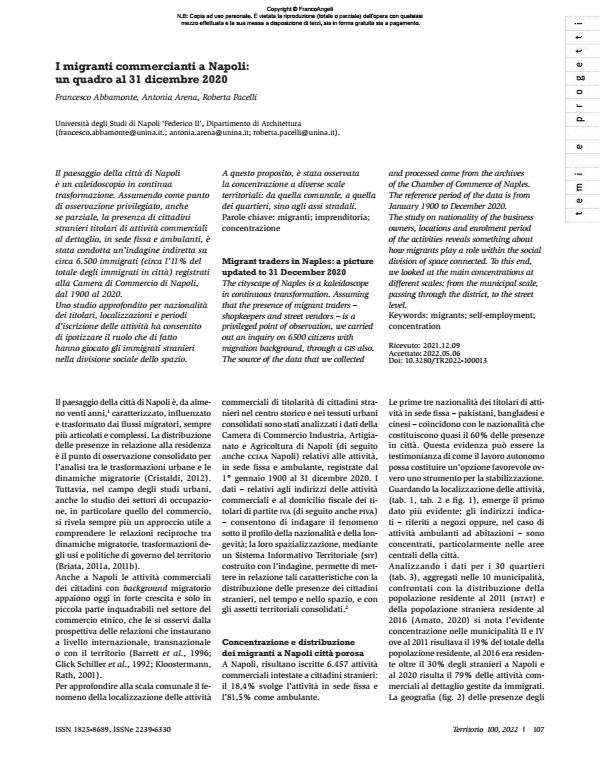I migranti commercianti a Napoli: un quadro al 31 dicembre 2020
Titolo Rivista TERRITORIO
Autori/Curatori Francesco Abbamonte, Antonia Arena, Roberta Pacelli
Anno di pubblicazione 2022 Fascicolo 2022/100
Lingua Italiano Numero pagine 12 P. 107-118 Dimensione file 757 KB
DOI 10.3280/TR2022-100013
Il DOI è il codice a barre della proprietà intellettuale: per saperne di più
clicca qui
Qui sotto puoi vedere in anteprima la prima pagina di questo articolo.
Se questo articolo ti interessa, lo puoi acquistare (e scaricare in formato pdf) seguendo le facili indicazioni per acquistare il download credit. Acquista Download Credits per scaricare questo Articolo in formato PDF

FrancoAngeli è membro della Publishers International Linking Association, Inc (PILA)associazione indipendente e non profit per facilitare (attraverso i servizi tecnologici implementati da CrossRef.org) l’accesso degli studiosi ai contenuti digitali nelle pubblicazioni professionali e scientifiche
Il paesaggio della città di Napoli è un caleidoscopio in continua trasformazione. Assumendo come punto di osservazione privilegiato, anche se parziale, la presenza di cittadini stranieri titolari di attività commerciali al dettaglio, in sede fissa e ambulanti, è stata condotta un’indagine indiretta su circa 6.500 immigrati (circa l’11% del totale degli immigrati in città) registrati alla Camera di Commercio di Napoli, dal 1900 al 2020. Uno studio approfondito per nazionalità dei titolari, localizzazioni e periodi d’iscrizione delle attività ha consentito di ipotizzare il ruolo che di fatto hanno giocato gli immigrati stranieri nella divisione sociale dello spazio. A questo proposito, è stata osservata la concentrazione a diverse scale territoriali: da quella comunale, a quella dei quartieri, sino agli assi stradali.
Parole chiave:migranti; imprenditoria; concentrazione
Francesco Abbamonte, Antonia Arena, Roberta Pacelli, I migranti commercianti a Napoli: un quadro al 31 dicembre 2020 in "TERRITORIO" 100/2022, pp 107-118, DOI: 10.3280/TR2022-100013